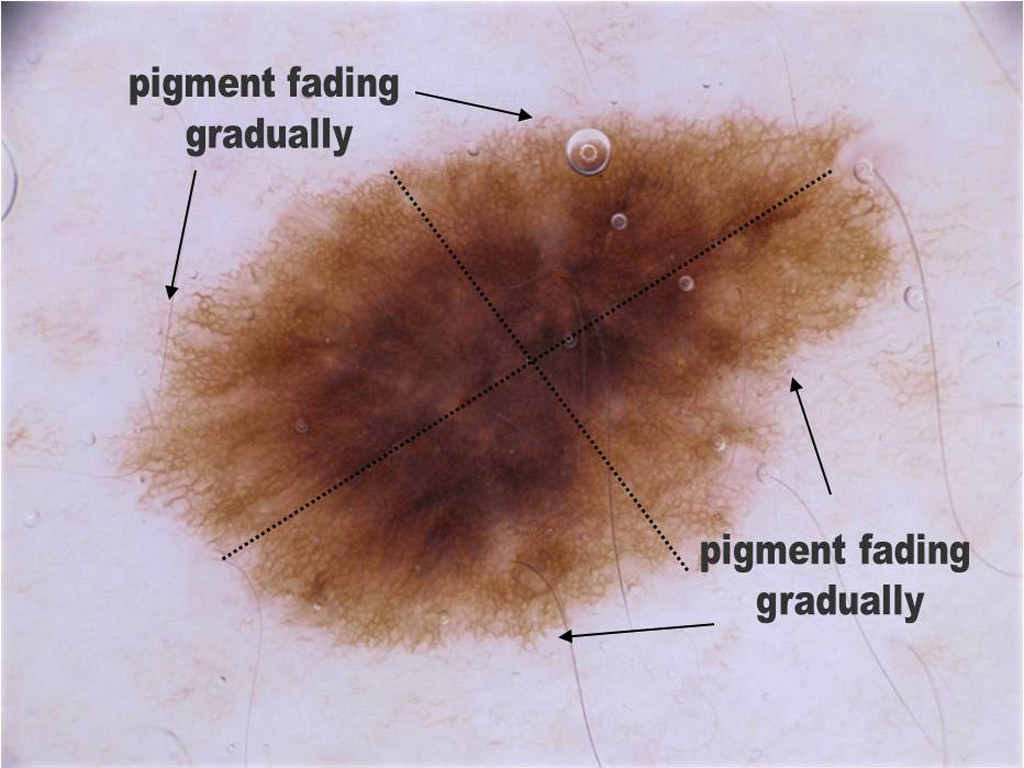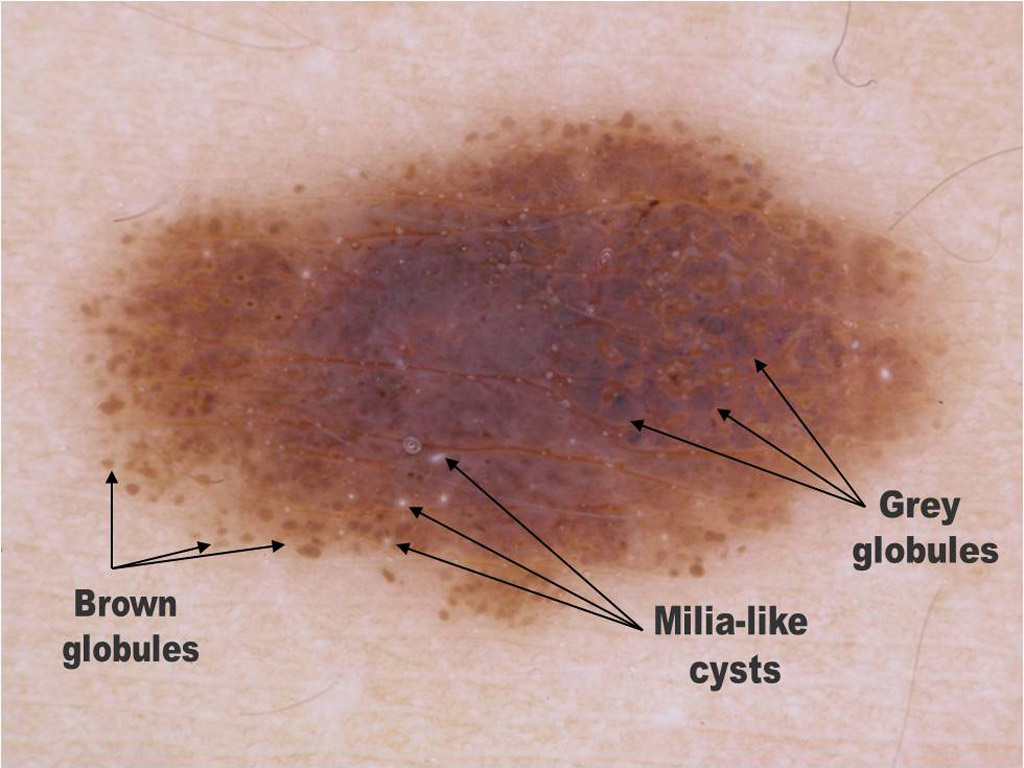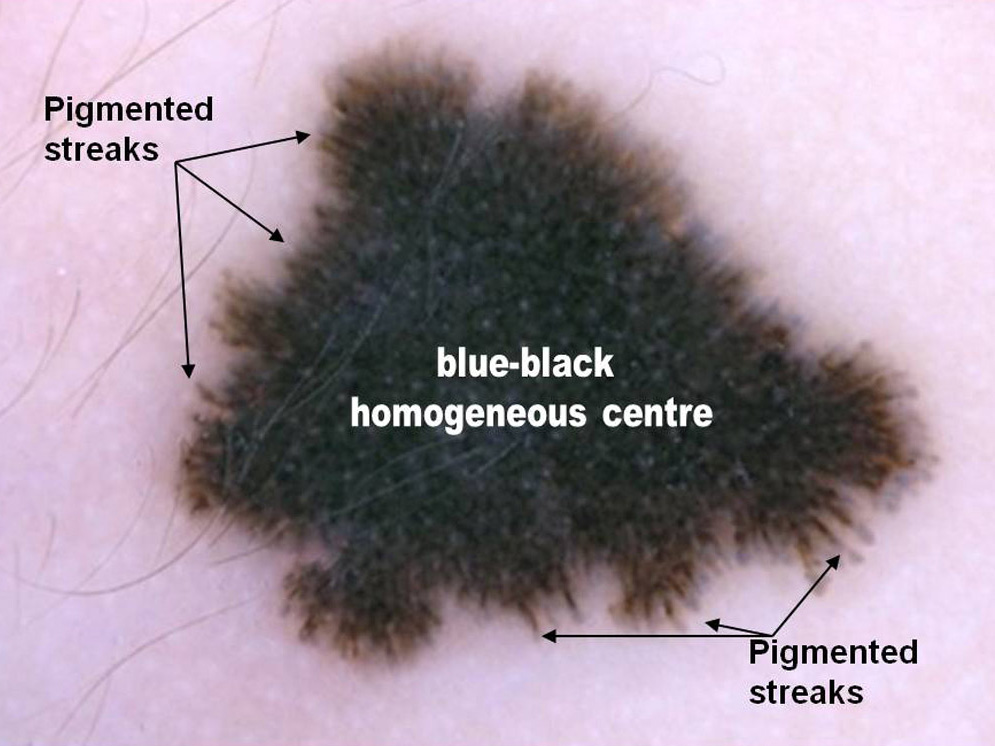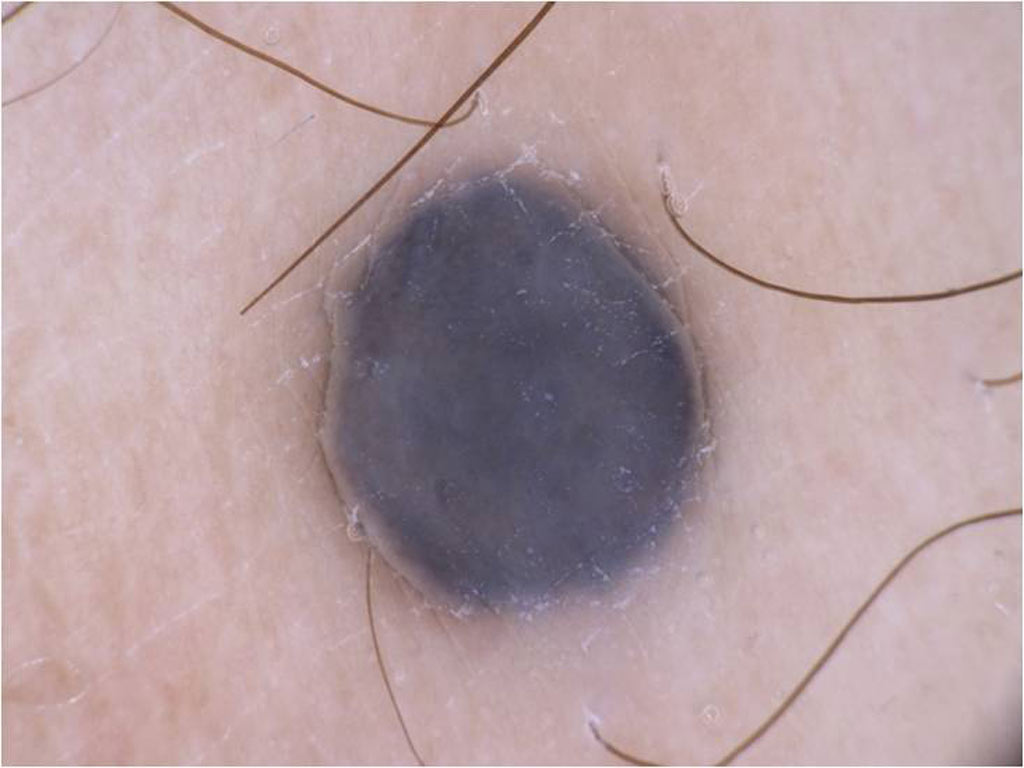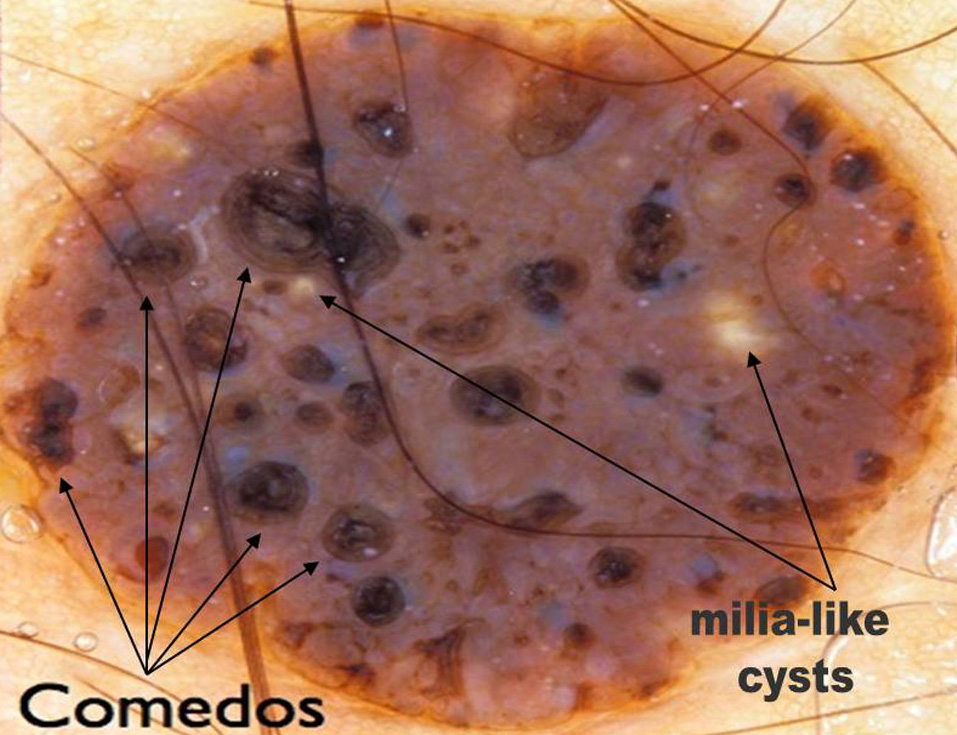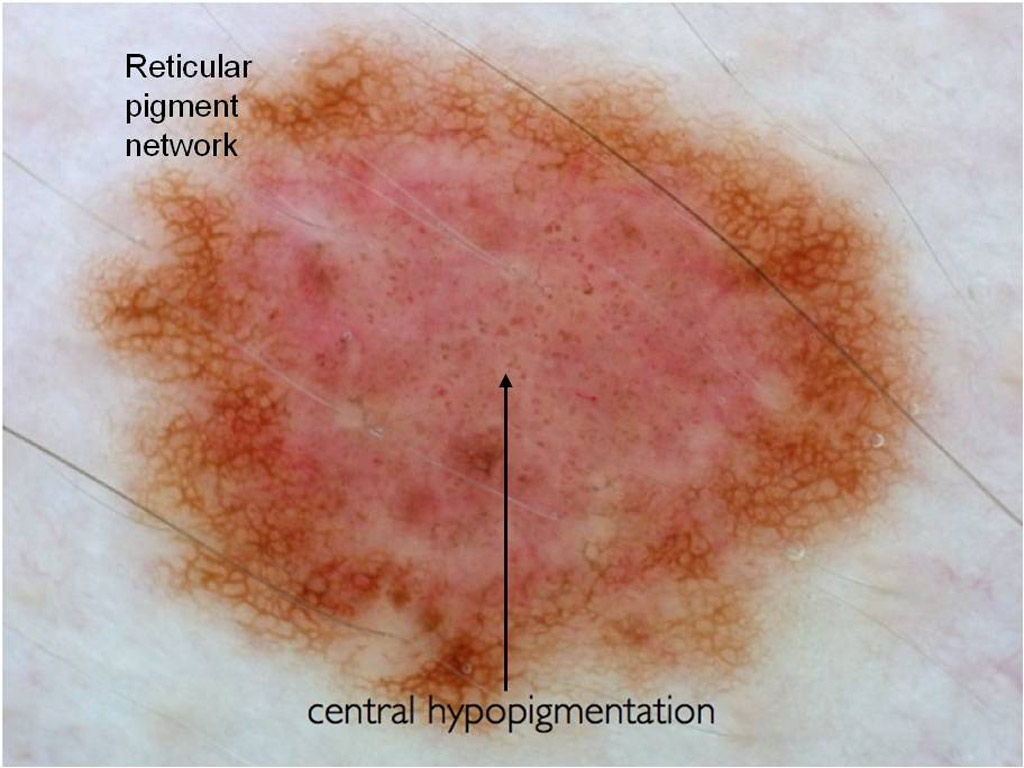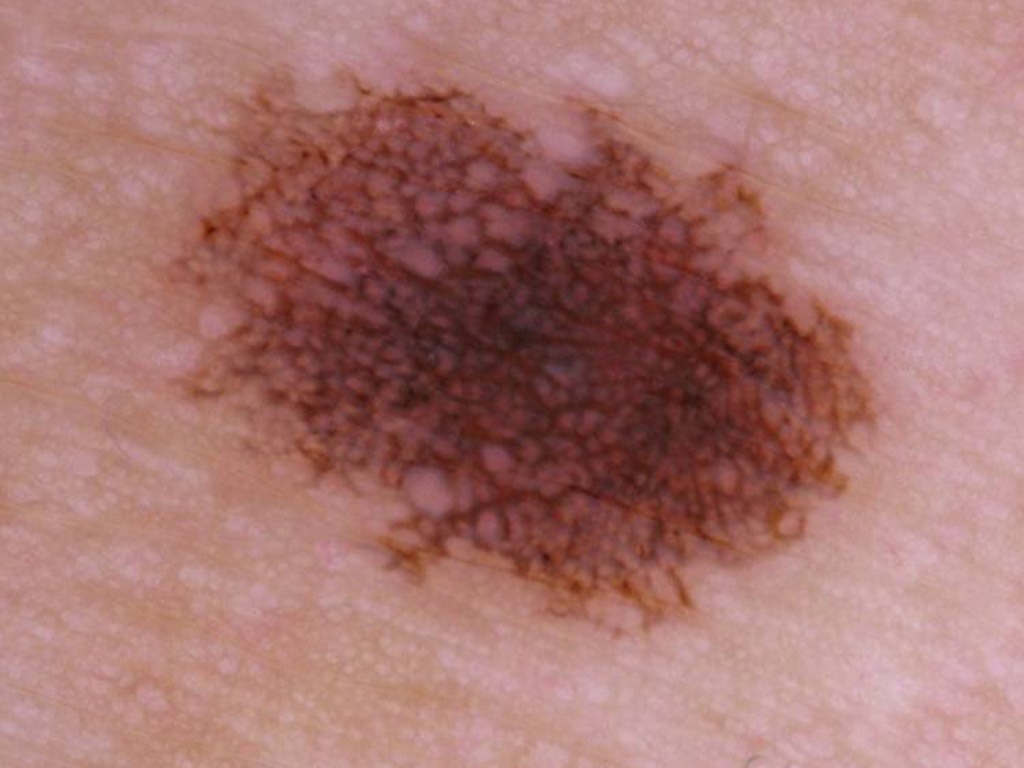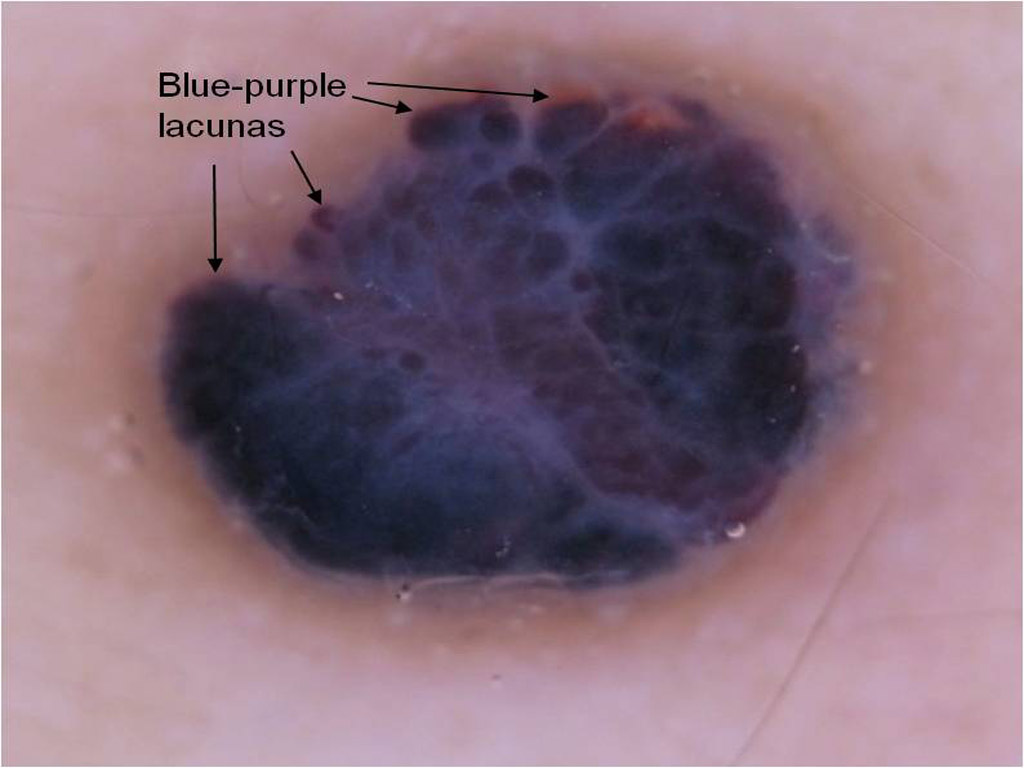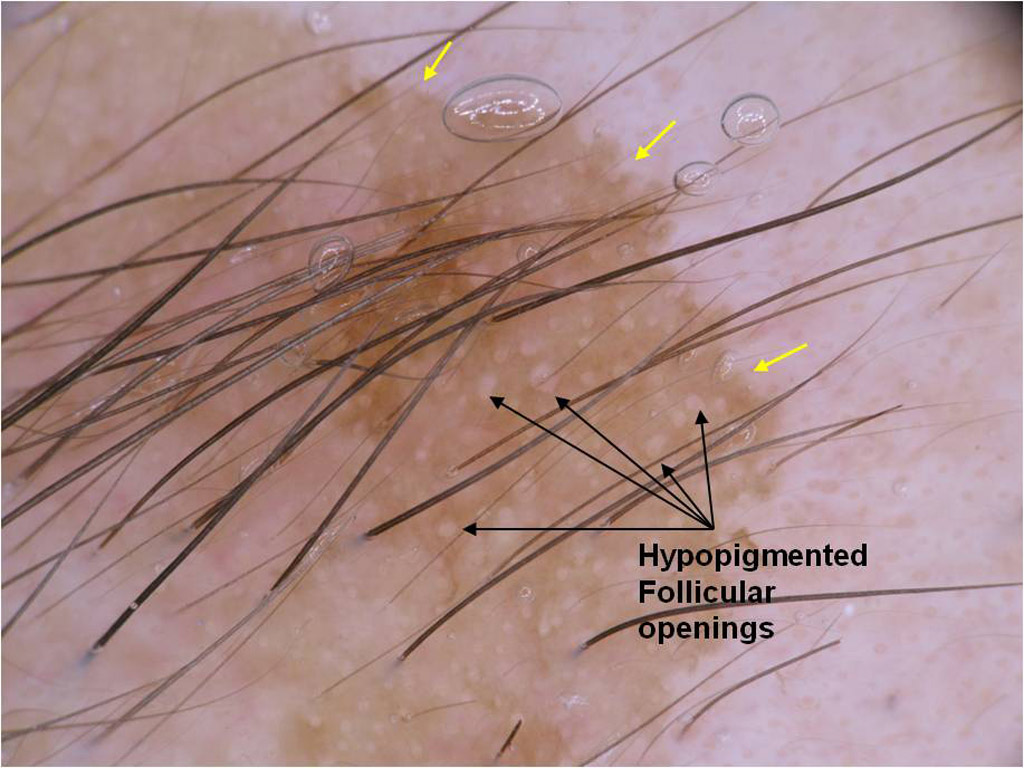Virtual Dermatoscope
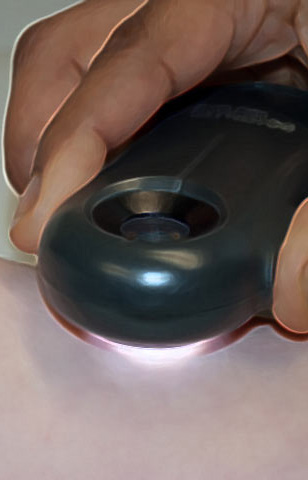
 A flat pigmented lesion on a 20 year old man’s back
A flat pigmented lesion on a 20 year old man’s back A palpable pigmented lesion on a young girl's thigh
A palpable pigmented lesion on a young girl's thigh A pigmented lesion on a 10 year old girl's index finger
A pigmented lesion on a 10 year old girl's index finger This lesion on a 40 year old woman's leg has not changed in 15 years
This lesion on a 40 year old woman's leg has not changed in 15 years A palpable pigmented lesion on a 58 year old man's back
A palpable pigmented lesion on a 58 year old man's back A palpable lesion on a 38 year old man’s abdomen
A palpable lesion on a 38 year old man’s abdomen A flat pigmented lesion on the areola
A flat pigmented lesion on the areola Rapidly growing heavily pigmented nodule. 32 year old man's abdomen
Rapidly growing heavily pigmented nodule. 32 year old man's abdomen Large pigmented macule on face of a woman with sun-damaged skin
Large pigmented macule on face of a woman with sun-damaged skin

